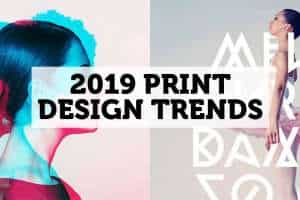In modern-day, graphic design for businesses as we live in a digital generation where graphic design is required to be appealing to new or existing customers. For a business to be successful is modern-day, it must be compliant digitally and have digital properties. This includes at least having a website, a mobile application, electronic billboards, or more. To have one of these working successfully, they must all have an efficient graphic design that represents your brand and captures the attention of new or existing customers with its aesthetics. With just the use of text or images, the digital property is likely to have the opposite effect and have a negative effect affect on your business. As graphic design has progressed and became such a norm, it is vital that each business looking for success invests in it.
Modern graphic design is much different to what it has been in the past. This is as most graphic design is created with computer software, whereas early graphic design was printed or created by hand. Although there has been so much change, the original principles and purpose of graphic design have not changed, and the purposes the original curators of graphic design used it are still there. In this blog, we look at the most important graphic designers of all time and how they have shaped the industry to be what it is today.
Paul Rand
Not only is Paul Rand a huge influencer for graphic design, but many would consider him to be the father and curator of graphic design as we know it today. Paul Rand published his book titles ‘Thoughts of Design’ in 1947, which contained theories and beliefs that shaped the future of graphic design to be what it is today. One of his greatest theories that still remains incredibly relevant today is that graphic design should be a “functional-aesthetic perfection, meaning the balance between beauty and practicality was one that he believed should be executed in order to make something look good, while effectively getting the message across.
Rand was a teacher of graphic design at Yale University and designed the existing logos of major global companies, IBM and ABC. He also pioneered the Swiss Style graphic design movement, which focuses on cleanliness, readability, and visual hierarchy. Rand differentiated graphic design from fine art by stressing the importance of accessibility alongside aesthetic. All these reasons contribute to why Rand is considered the father of modern graphic design.
Ruth Ansel
Ansel was the first female director of the New York Times Magazines, House and Garden, Vogue, and Vanity Fair, all in one lifetime. She also became one of two directors in Harper’s Bazaar. This is all due to her talent in graphic design. For well over 40 years, Ruth Ansel has worked with photographers, artists, illustrators, including some familiar names including Andy Warhol and Annie Leibovitz. She has also produced incredible campaigns for Karl Lagerfield, Versace, and Club Monaco.
Although she has a vast wealth of experience in her field of work, finding guidelines from herself on how to follow her footsteps are gold dust to find. The closest thing we can get is from her interview with AIGA, where she discusses the four rules that she always follows during her process of designing magazine layouts. For print graphic design, you could definitely say that Ruth Ansel is one of the curators and a massively important figure.
Milton Glaser
Milton Glaser designed one of the most simple, yet recognizable logos whilst in the back of a taxi. The I Heart NY logo, which can be seen on prints, t-shirts, and souvenirs all across the globe. It has also been adjusted to be for different places and it is highly unlikely that you’ll visit a popular tourist attraction without this logo being sold on souvenirs with the place name adjusted to the location. Not only did he create this incredible familiar logo, but he also was the founder of New York Magazine and his art has featured in Georges Pompidou in Paris, additionally to the Museum of Modern art. Due to his incredible work, Glaser was also the first graphic designer to be presented with the highest award for artists and patrons, the National Medal of the Arts by the United States.
Saul Bass
Saul Bass was an individual that had an opportunity, took it, then rode it out for the remainder of his career. In 1954, Bass was asked to design a poster for the 1954 movie Carmen Jones and the design was so impressive that the directors of the movie asked him to design the credits as well. After this, Bass’s life as an advertiser was over as he knew it, and the beginning of his life as a graphic designer has kist begin.
Following this, Bass then distinguished himself as a designer in Hollywood by implementing kinetic typography into the titles and credits of movies. For those who do not know, kinetic typography is the process of animating text to express different ideas. This technique was used by Bass for a selection of movies including Psycho, The Shining, and Vertigo.
Additionally to Bass’s introduction of kinetic typography to Hollywood movies; he was also the logo designer for many global brands including Kleenex, Dixie Cups, Quaker Oats, and many more. Many of the logos that Bass designed have gone through a logo revolution, however, they all still remained tired to their Saul Bass roots.
Carolyn Davidson
Creator of one of the most iconic logos of all time, the Nike swoosh, Carolyn Davidson is truly a pioneer of graphic design. Her story is the classic tale of being approached to design a logo by Phil Knight (one of Nike’s founders) that has something to do with movement. After being approached, Davison came up with five drafts, and the swoosh was selected. For this, Davidson was paid a mere $35, but this isn’t where the story ends.
Nike eventually went public in 1983, and Knight then gave up to 500 shares of stock alongside Nike swoosh chocolate and a gold swoosh ring. This story is a valuable reminder that women who work in creative fields should not undersell themselves, believe in themselves, and stand up for what they deserve.
Alexander Trochut
Out of the list of graphic designers, Alex Trochut is one of the youngest innovators and is still up and coming in the graphic design world. Alexander Trochut specialises in typography which has two elements. The two elements of typology include the image that the characters make and the world that the characters spell. In a typical piece for Trochut, the image comes first and he draws his work with inspiration from street culture, fashion and pop culture. Trochut has an incredibly impressive list of clients which includes Pepsi, Coca Cola, Nike, MasterCard, Adobe, Audi, Washington Post, Apple, The Oscars, and more.
How can Coco Loco help you with design work?
We are expert graphic designers in Essex that provide all different elements of graphic design including infographics, advertising, logo design, annual reports, Japanese logo design, and more. Get in touch with our team of experts today for more information.



